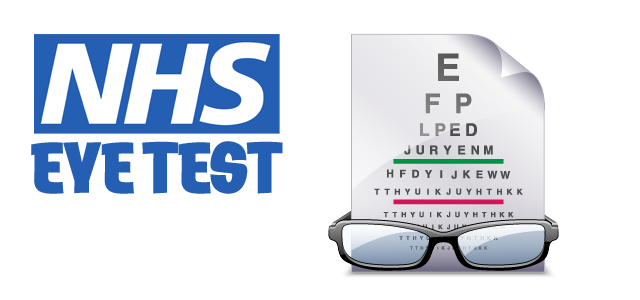![]()
Jack Brown Eyecare, Edinburgh Opticians.
Email: info@jbeyecare.com
Jack Brown Eyecare Branches
30 Elder Street, Edinburgh EH1 3DX
Tel: 0131 557 3531
Open in Google Maps
Westside Plaza, Edinburgh EH14 2SW
Tel: 0131 442 2333
Open in Google Maps

This page aims to answer some of the questions and concerns you may have if your child has a squint or if there is a family history of squint.
Squint can be a complex condition and not every situation is covered in this factsheet, but your practitioner or eye specialist will be pleased to give you further advice, if needed. Your child will benefit from your support and encouragement during treatment, so do not be afraid to ask questions that will help you to understand more easily the condition and treatment.
What is a squint and how common is it?
A squint (also known as strabismus) is a condition that arises because of an incorrect balance of the muscles that move the eye, faulty nerve signals to the muscles and some refractive error (focusing faults). If these are out of balance, the eye may turn in (converge), turn out (diverge) or sometimes turn up.
Approximately five to eight percent of children are affected by a squint or a squint related condition, which means one or two in every group of 30 children. If your child appears to have a squint at any age from six weeks onwards, it is important to seek professional advice quickly. Many children with squints have poor vision in the turned eye.
What causes it?
There are several types of squint. The cause is not always known, but some children are more likely to develop it than others.
Congenital Squint
Sometimes a baby is born with a squint, although it may not be obvious for a few weeks. In about half of such cases, there is a family history of squint or the need for spectacles. The muscles are usually at fault.
Long Sight (Hypermetropia)
This can sometimes lead to a squint developing as the eyes are over focusing whilst trying to see clearly. The over focusing produces double vision. In an attempt to avoid this, the child may automatically respond by suppressing the image from one eye and turning it to avoid using it. If left untreated, a 'lazy eye' may result. The most common age for this type of squint to start is between 10 months and two years, but it can also occur up to the age of five. It is usually first noticed when a baby is looking at a toy, or at a later age when a child is concentrating on close work, such as a jigsaw or reading.
Childhood Illnesses
Following an illness such as measles or chickenpox, a squint may develop. This may mean that a tendency to squint has been present but, prior to the illness, the child was able to keep his or her eye straight.
Nerve Damage
In some cases a difficult delivery of the baby or illness damaging a nerve can lead to a squint.
Can a baby have a squint?
Yes, a baby can have a squint, especially if there is a family history of it. If this is suspected, it is important that the baby be referred for accurate assessment at the earliest opportunity. Sometimes a baby has what is known as a 'pseudo squint' which is related to the shape of the face, but a baby with a true squint will NOT grow out of it.
Isn't a squint just a cosmetic problem?
Certainly the appearance can lead to problems for the child, but a squint is NOT merely a cosmetic problem. If left untreated, it can lead to a permanent visual defect in the squinting eye.
How can I tell if my child has a squint?
Untrained people usually think a child has a squint if their eyes look different. This is not necessarily a squint. Squints are often difficult to detect, especially in younger children. Older children may complain of sight difficulties, such as double vision. If you think your child has a squint, ask your health visitor, child health clinic, GP or school doctor/nurse about a referral to an optometrist, ophthalmic medical practitioner or a hospital eye clinic for assessment.
What happens at the Hospital Eye Clinic?
Your child will be assessed to see whether a squint is present and what type of squint it is. The eye specialist will decide if further tests are necessary and if spectacles are needed.
Will my child have to wear spectacles?
Some squints, especially those that arise because the child is long sighted, respond well to treatment involving the wearing of spectacles. Children usually adapt well to wearing spectacles and professional advice from your practitioner will help you choose attractive spectacles for your child, should they be required.
Should their teachers know?
Yes. Children with a squint may find some problems with fine manual tasks, such as threading a needle. Fast ball games may present difficulties as the child may misjudge the speed and distance of the ball. With a squint depth judgement may be unreliable. If teachers are aware, they will be more tolerant of the missed catch! Also, children undergoing active therapy may need the co-operation of their teachers.
What treatment is available and will an operation always be needed?
No. An operation is not always needed. Treatment varies according to the type of squint. The main forms of treatment are:
- SPECTACLES - to correct any sight problems, especially long sight.
- OCCLUSION - this is patching the good eye to encourage the weaker eye to be used.
- EYE DROPS - certain types of squint can be treated with the use of special eye drops.
- SURGERY - this is used with congenital squints, together with other forms of treatment in older children, if needed. Surgery can be performed as early as a few months of age.
Why is an operation necessary?
Sometimes it is the only way of straightening the eye sufficiently for sight to be retained in the squinting eye. If performed at the appropriate time, results can be very good and satisfactory 3D vision can develop. There are occasions, however, when the result may only be cosmetic but the child's appearance in these cases is usually much improved. It is not uncommon for more than one operation to be necessary. This does not mean that something has gone wrong but that fine-tuning is needed to obtain the best results.
How is the operation done?
It involves repositioning the relevant eye muscles, often in conjunction with shortening one of the other muscles. This has the effect of weakening or strengthening muscles to get the best result.
What happens after the operation?
Your child may be in hospital for about 48 hours and will usually be allowed home the day after the operation. Some hospitals treat squint surgery as a day case, which may result in your child being very sleepy when going home. The eye may be red, but this settles down after a few days. Your child should be able to return to school after about 10 days. Regular follow-up visits to the eye specialist will be necessary for progress to be monitored. It is very important that these appointments are kept.
If your child wore spectacles before the operation to correct long sight or short sight and/or astigmatism, spectacles will still be needed, at least to begin with. This is because the operation corrects muscle imbalances, not focusing errors. As your child will be having regular follow-up care by the eye specialist and the orthoptist, tests to assess the need for spectacles will be carried out as part of this care. Some children may not need spectacles as they get older, but this must be judged according to each individual child's needs.
Can adults have a squint treated?
In certain cases, depending on the cause, a squint in an adult can be treated. Careful assessment will determine whether treatment is possible and may include surgery if appropriate.
REMEMBER... If in doubt, get qualified advice.
If you have any questions about your child's treatment, ask the eyecare professionals treating your child. If you think your child may have a squint, seek referral to a specialised eye clinic for assessment as early as possible. The earlier treatment starts, the better the results are likely to be.
text size >












